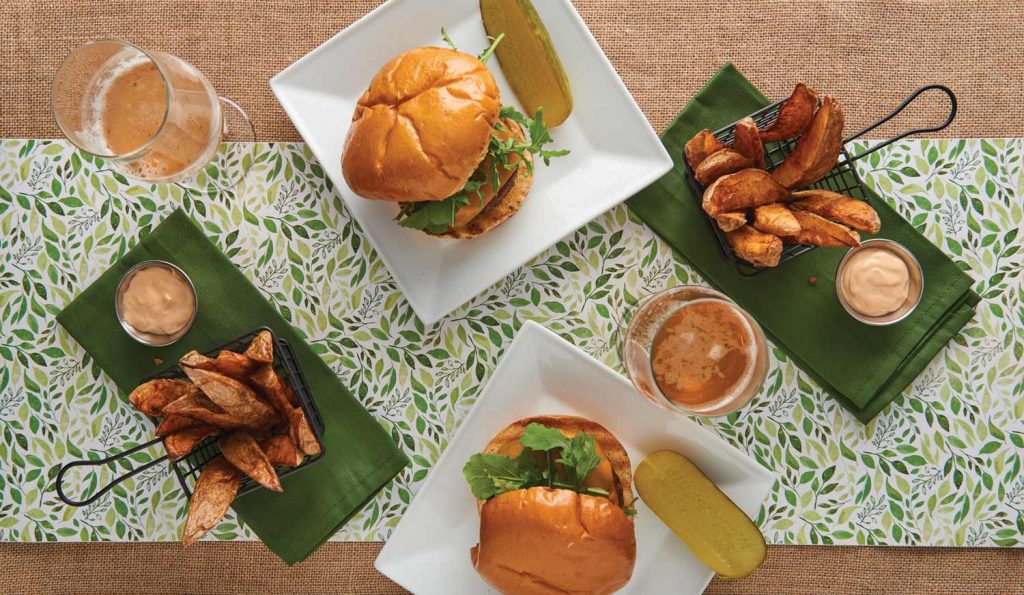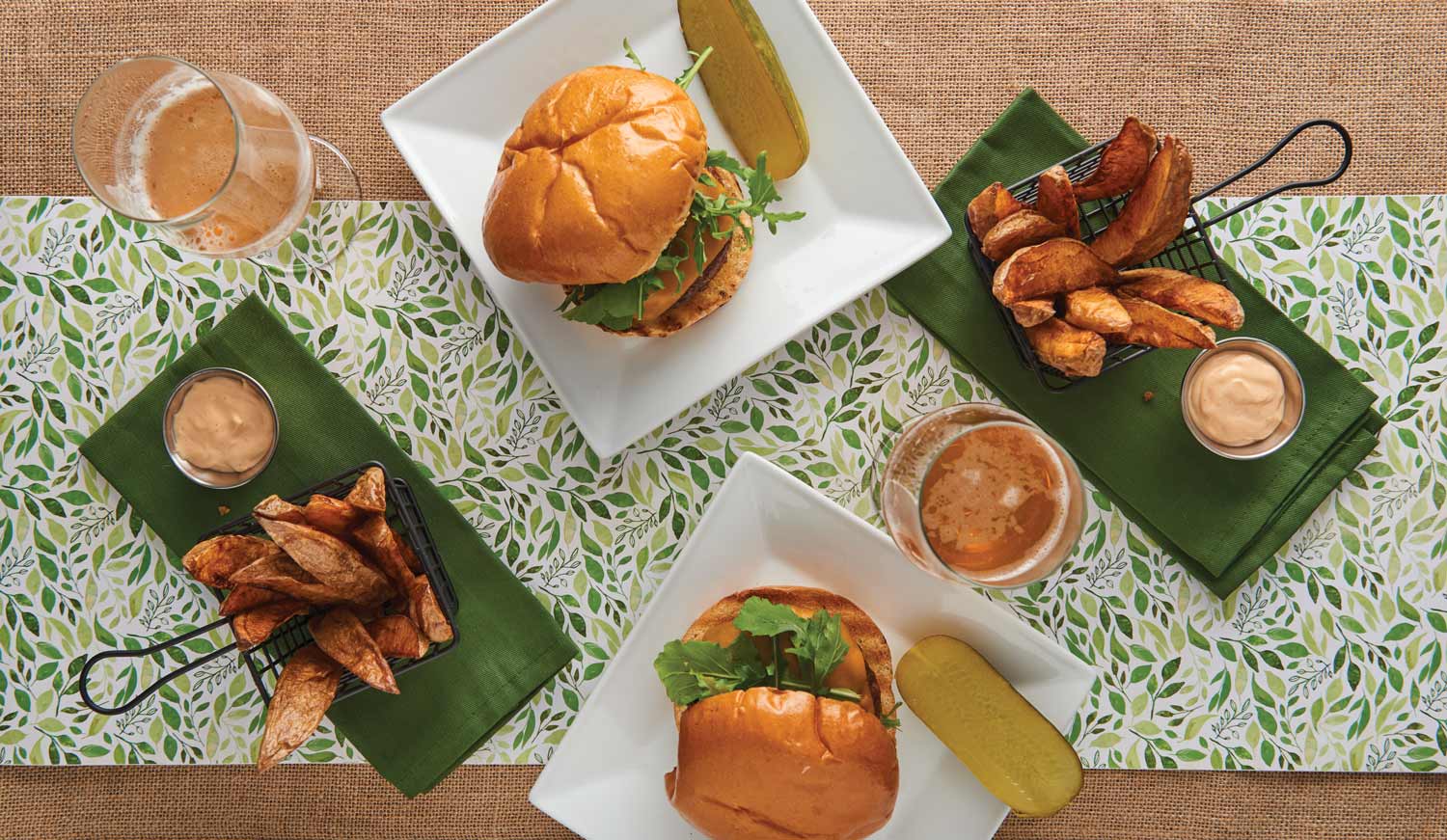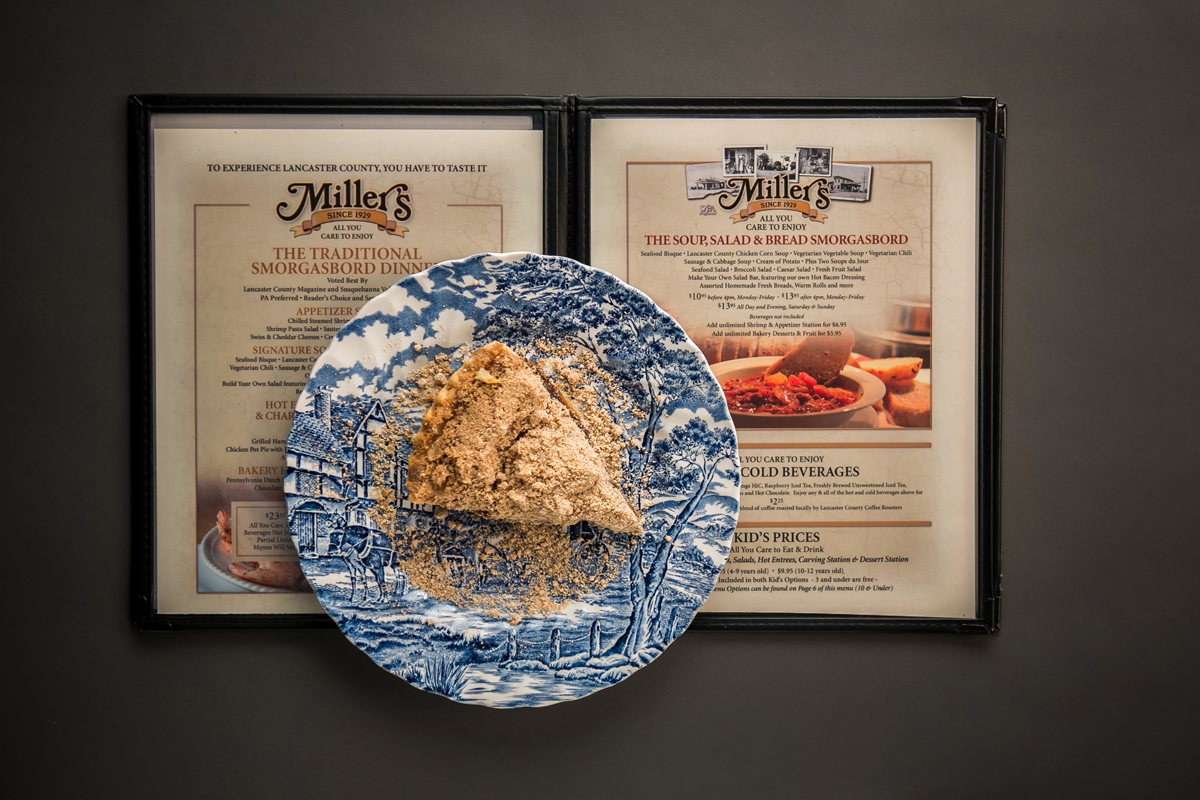The Case for Less Meat
Originally published in the January 2021 issue of LCM
With immense hope, a new year has arrived! As is often the case, many of us resolve to embark on new nutritional choices in the pursuit of a “better you.” Over the last year, I’ve weighed my own health and dietary concerns and have arrived at a personal challenge that calls for expanding Meatless Mondays into a meatless lifestyle.

Let’s get this out of the way right from the start: I love eating meat. Few things are better for Sunday brunch than crispy, melt-in-your-mouth bacon. And, don’t get me started on chicharrones (fried pork belly) with lime for dinner. Oh, and a juicy burger with all the fixings is pure heaven. Barbecued anything and I’m in.
Regrettably, I’ve come to learn that my body does not share that sentiment. Over the last several years, my blood pressure, LDL and total cholesterol levels have climbed to concerning levels. I’m a young, fairly active guy, so yes, it was eye-opening to see those test results. My primary care physician immediately implemented a course correction, suggesting I alter my diet to include a wider array of fresh, whole foods. Recognizing that I needed to reduce my meat intake long-term, I started on a path to find healthier, plant-based substitutes without feeling as though I was giving something up.
My first revelation was Impossible Burgers, plant-based burgers that are wholly convincing ground-beef substitutes. I’m not talking about those rather unappealing frozen veggie burgers. Impossible Burgers look, smell, cook and fully taste like meat. Free of cholesterol, they do contain some saturated fat from coconut oil, so while these burgers are delicious, they’re not fully guilt-free. Burger King of all places sells them – you’ve probably seen the television commercials – if you want to take a quick taste-drive (you can opt for cheese and bacon).

It’s also a fun experiment to put an Impossible or Beyond Meat burger on someone’s plate at a cookout and see if they notice the difference. (Without drawing attention to the switch, it almost always goes unnoticed. Hand your guinea pig the grilling spatula and they still might not notice.) In our household, plant-based meat effortlessly made its way into burritos, meatballs and chili, so we stopped buying ground beef altogether.
What surprised me, however, was how I felt after the one or two occasions I had ground beef in the last year. In short: sluggish and groggy. I chalk that up to the fact that meat takes more time and energy to digest.
Based on my body’s reaction, I decided to move forward by ruling out beef and scaling back all meat consumption. I found it easy to go a day without consuming meat; if you’re considering setting a starter goal, one day a week is the perfect place to begin. Meatless Monday has been on trend for a few years and you can probably pick up some tips and menu ideas by googling it. If that’s too ambitious, start with one meal each day. I found it was easy to go multiple days without meat. It now occupies a smaller segment of my life and where it does exist, I make it count.

Vegetarian Versus Vegan
A vegan lifestyle is 100% plant-based, free of any animal products, whereas those living a vegetarian lifestyle refrain from consuming animal meat. I once thought that a vegan diet was predominantly a moral position – more so than just nutritional – but recent academic studies are reporting that consuming any animal protein can lead to inflammation within the body. For example, consuming high levels of heme iron contributes to increased risks of various types of cancer, Type 2 diabetes and coronary heart disease.
Many athletes are adopting vegan lifestyles, citing such benefits as the ability to digest plant-based protein at a faster rate for quicker recovery, improved blood flow and increased endurance. Among them are retired professional bodybuilder Arnold Schwarzenegger (who spent most of his life chasing “The Pump” and backing it with steak), Novak Djokovic (tennis), Chris Paul (basketball) and Jackie Chan (an actor with a martial arts background). All four were executive producers for the documentary, The Game Changers, which debunks myths that (professional) athletes need animal protein to perform at high levels. It makes a convincing, data-driven argument for replacing all animal products with plant-based, whole foods based on health alone. In the documentary, Patrik Baboumian, Germany’s Strongest Man (2011) and a devotee of the vegan lifestyle, remarks, “Someone asked me how I could get as strong as an ox without eating any meat. My response was, ‘Have you ever seen an ox eat meat?’”
Economies and Scale
Another consideration is the economics of meat. Depending on the animal, roughly six times as much plant-based energy is required to create animal-based protein and calories, compared to crops we eat directly. It’s an inefficient process and entails costs that go beyond financial. The acreage of farmland nationwide needed to feed animals raised for beef consumption is high. Its byproducts include wastewater that ends up in waterways and methane pollution, which, quite baffling, is roughly equal to the emissions of all forms of transportation globally. Consider that more than 600 gallons of water are required to produce one hamburger patty, starting with growing the crops that feed and nurture cattle. As more plant-based meats come to market and options continue to expand, there is plenty of room for the price of plant-based meat to decrease.
It’s worth mentioning biosecurity, a concern farmers have to contend with to fight the spread of disease, particularly in large, dense populations at factory farms. There are obvious risks of a virus jumping from animals to people, too, including swine flu and mad cow disease. Even deer and elk hunters in Pennsylvania, who help control the population size, keep tabs on chronic wasting disease, a neurologically degenerative infection that, to date, does not affect humans.
A Dietician’s Perspective
Kilene Knitter, MS, RD, LDN, is a regional nutritionist at GIANT in Lancaster. The team of nutritionists at GIANT offers free, virtual nutrition classes for both kids and adults. I reached out for her thoughts on nutrition and meal planning.

“No matter what direction we go in with our diet, whether it’s vegetarian, vegan or just trying to get healthier in general, it’s always important to remember that the goal is to choose foods that nourish our bodies,” Kilene notes. “Whole foods like fruits, vegetables, whole grains, dairy and protein – animal or plant – are going to nourish our bodies the best. There are prepared plant-based substitutes available but always double-check their nutrition information because they can sometimes be higher in sodium, fat or added sugars to boost flavor and texture. If you can make it yourself, you’ll be more in control of the ingredients and portion size. You can visit giantfoodstores.com/recipes for plant-based protein inspiration and recipes,” Kilene points out.
For those who prefer to consume animal protein, Kilene advocates for leaner cuts. “Skinless chicken, turkey and fish are all going to be leaner options. For fish, the recommendation is to have two servings a week, especially from salmon, tuna or sardines, which contain omega-3 fatty acids. These may be beneficial for reducing inflammation and providing heart health benefits.” As for beef and pork, “there are leaner ways to enjoy those meats.” For beef, she suggests you look for cuts that contain the words “loin” or “round.” For pork, “chop” and “loin” will also indicate leaner cuts containing less fats. Look for ground meats at least 90% [lean] or higher. In addressing portion size, Kilene says, “When you go to a steakhouse, if the cut of meat is bigger than your head, that is not an appropriate portion size. Aim for three ounces – the size of a deck of cards. It should fill a quarter of your plate. If you have leftovers, take them home to enjoy at another meal.”
She also suggests that you consider adding legumes and veggies to ground meats – she refers to the technique as “The Blend” – for added nutrition. Kilene elaborates: “This meal extender idea is from the Mushroom Council and is a cooking technique that combines chopped mushrooms with ground beef, turkey, pork and even tofu. It helps to stretch your budget because you’re getting more volume. Plus, it gives you the same meat-like texture but with added nutrients, like fiber. You can roast the mushrooms beforehand so they have even more flavor. Once you blend together the ground meat and chopped mushrooms, use this mixture for burgers, tacos, meatballs or meatloaf. It’s a really budget-friendly and sustainable way to add more veggies and create different flavors in your kitchen.

“Making healthy choices at each meal doesn’t have to be expensive or complicated,” she continues. “Keep it simple by filling half your plate with non-starchy vegetables such as broccoli, cauliflower, carrots, Brussels sprouts or green beans. Non-starchy veggies are full of fiber, so you’re going to feel fuller for longer, as well as many vitamins and minerals to keep our bodies healthy. To stretch your dollar and get the most flavor, aim to include seasonal produce options.”
A quarter of the plate should be filled with starches and whole grains: brown rice, whole grain pasta, legume-based pasta, sweet potatoes, potatoes, corn or peas. “They’re going to give us complex carbohydrates, which keep our bodies energized,” she explains. Finally, according to Kilene, “The last quarter should be protein and that’s where normally we see the most variation. This portion could be from lean proteins, such as chicken, turkey or fish and plant proteins like tofu, beans or lentils, or a combination of both! We are always aiming to have a variety of color, flavors and textures on our plate at each meal. As long as we are setting up our plate this way, we know we have a great balance of all the nutrients we need to be fueled and nourished.”
For more information on GIANT nutritionist events, visit thegiantcompanynutritionists.eventbrite.com.
A Choice in the Matter
Seasoned vegetarians share that choosing such a lifestyle has become much easier to navigate. Expanded food options improve variety for everyone – including vegans and vegetarians – at grocery stores and on restaurant menus. Grocery stores increasingly have sections dedicated entirely to plant-based alternatives, which is both eye-opening and convenient. I’d encourage you to check them out.
The good news is that after making revised nutritional choices that minimize meat, my blood markers have all improved to healthier levels. I’d much rather control portions and opt for plant-based foods than pay a long-term price with my health. When it comes to going vegan, a position I respect and admire, there are some foods that I’m not sure I’d ever be able to give up, including eggs, fish and milk, to name a few. Several vegetarians I’ve spoken with cite a sense of missing out at the dinner table, especially when they travel, although menus and recipes that address their needs continue to develop all the time. As convincing plant-based meat alternatives arrive on the scene and improve with mouth-watering flavors, reduced levels of sodium and lower costs, such options are good for our bodies, livestock, economy and our planet.






